The Healing Power of Art Therapy: How Creativity Can Be Your Emotional Lifeline
Since the earliest days of human history, we’ve expressed ourselves through art — cave paintings, pottery, music, body adornment. These weren’t just hobbies. They were ways of processing experiences, sharing identity, and connecting with others.
In modern life, we’ve often reduced art to something decorative, something “extra” if we have the time. But art therapy reminds us of the truth our ancestors knew: creativity isn’t a luxury. It’s a form of survival.

What Is Art Therapy?
Art therapy is a therapeutic approach that blends psychology and creativity to help people process emotions, navigate challenges, and reconnect with themselves. It uses the creative process — painting, drawing, collage, sculpture, photography, textile arts, and more — as a way to communicate experiences that words can’t always capture.
You might find art therapy in hospitals, schools, mental health clinics, community centres, rehabilitation programs, private practices, and even virtual spaces. It’s a flexible, inclusive practice that can adapt to all ages, cultures, and abilities.
The key difference between art therapy and casual art-making comes down to intention. In art therapy, it’s not about technical skill, talent, or “getting it right.” Instead, the aim is to create a safe, non-judgemental container where you can explore your inner experiences freely — without pressure to perform or produce something “good enough” for display.
It’s About the Process, Not the Product
In everyday art-making, you might focus on how your piece looks in the end. In art therapy, the emphasis is on what happens while you create. Your brushstrokes, colour choices, and even the pauses you take can reveal insights into how you’re feeling and coping.
Example:
Someone feeling anxious might notice their drawings are tight, small, and contained in one corner of the page. In conversation with a therapist, that might open a dialogue about boundaries, control, and the need for emotional safety.
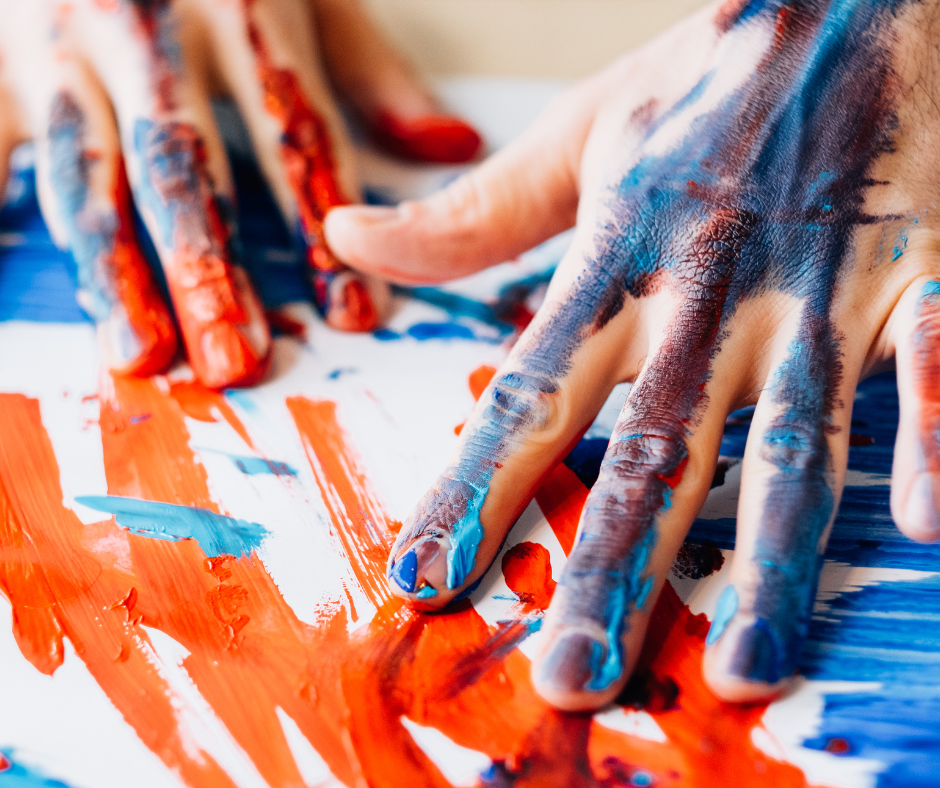
A Different Language for Your Emotions
Not all feelings can be explained in words. Sometimes, talking about an experience can feel too overwhelming — or you might not have the vocabulary to describe it. Art therapy gives you another language: a visual, tactile, and sensory one.
Example:
A client working through grief might paint only in shades of grey and blue without consciously realising it. When they see this pattern emerge over multiple sessions, it can become a bridge for discussing emotional heaviness and loss.
Where You Might Encounter Art Therapy
Art therapy isn’t limited to one type of setting or problem. You might come across it in:
- Hospitals: Helping patients process the emotional impact of illness or recovery.
- Schools: Supporting children with emotional regulation, learning differences, or social skills.
- Trauma centres: Offering survivors a way to process experiences safely.
- Online therapy spaces: Using digital art tools for accessibility.
Example:
In a hospital oncology ward, patients might work on a shared mural during treatment days, creating a sense of community and distraction from medical stress.

Why Intention Matters
Anyone can pick up a paintbrush and create — and that’s wonderful for self-expression. But in art therapy, the presence of a trained therapist shifts the experience. The therapist helps you notice patterns, connect your art to your emotional world, and guide you toward deeper self-understanding.
Example:
If you create an image full of sharp, jagged lines, a therapist might ask: “How does it feel to look at this?” or “What was happening for you while you made these marks?” The goal isn’t to interpret your art for you, but to help you find your own meaning in it.
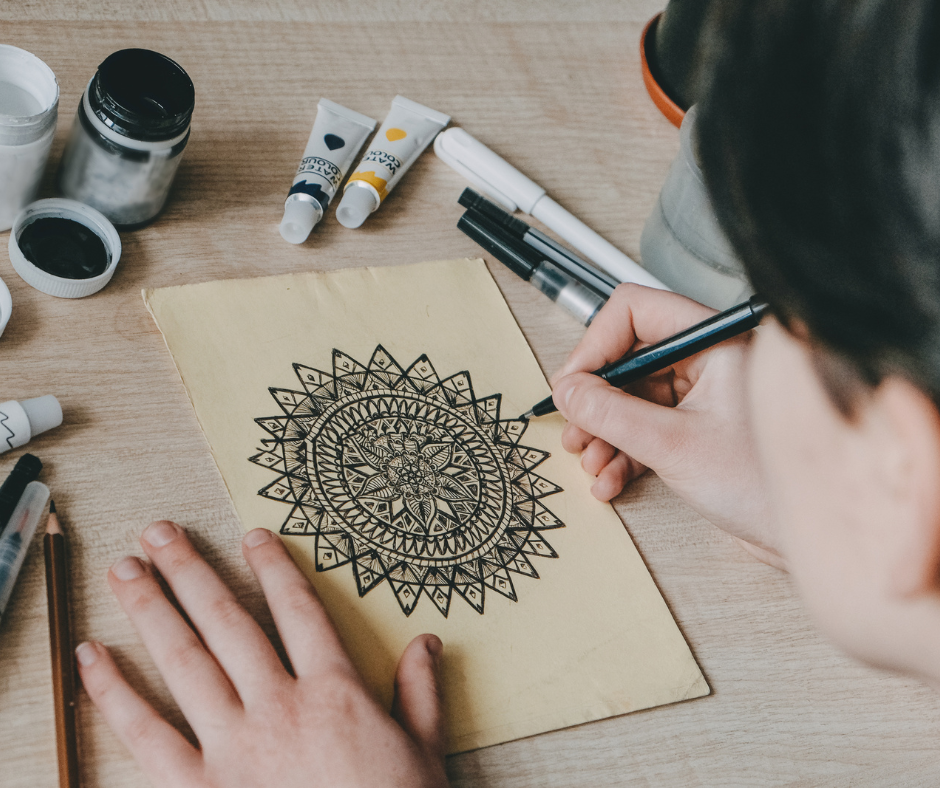
Why Art Therapy Works (The Brain Science + Emotional Impact)
When you create art, you’re not just making something to look at. You’re engaging multiple systems in your brain and body that work together to regulate mood and store memories.
Here’s what happens in art therapy:
- The limbic system (emotional centre) is activated, allowing you to process feelings that might be hard to verbalise.
- The prefrontal cortex (decision-making and self-awareness) helps you make sense of what you’ve expressed, turning it into insight.
- The parasympathetic nervous system (rest-and-digest mode) is engaged through repetitive, tactile movements like brushing, shading, or kneading clay, lowering stress hormones.
- The nonverbal memory systems store emotional experiences in sensory ways — and art allows those to be accessed and released.
On a deeper emotional level, art therapy can:
- Give you a safe detour around the inner critic by shifting focus from “finding the right words” to expressing through colour, shape, and texture.
- Help you process grief, trauma, or anxiety in a non-linear way that feels less overwhelming.
- Offer a tangible record of your healing journey — something you can see, touch, and revisit.

15 Art Therapy-Inspired Activities You Can Try at Home
These activities are intentionally flexible so they can meet you wherever you are — emotionally, mentally, and creatively. You don’t need expensive supplies; even a pen and scrap paper will do.
1. Mood Colour Mapping
Instead of naming your emotions, translate them into colours. Fill a page with swirls, shapes, or patches that correspond to how you feel in the moment.
- Assign colours intuitively — sadness might be pale grey for one person, deep red for another.
- Notice how much space each emotion takes up on the page.
- Ask yourself: Do the colours blend, clash, or stay separate?
This bypasses your thinking brain and creates an emotional “snapshot” you can later compare to other days.
2. Draw Your Safe Place
Imagine a space — real or imagined — where you feel completely safe and calm.
- Include sensory details: What sounds are in the background? What scents linger in the air? What textures surround you?
- Make it as abstract or realistic as you like.
This drawing can become a grounding tool — a place to return to visually when stress spikes.
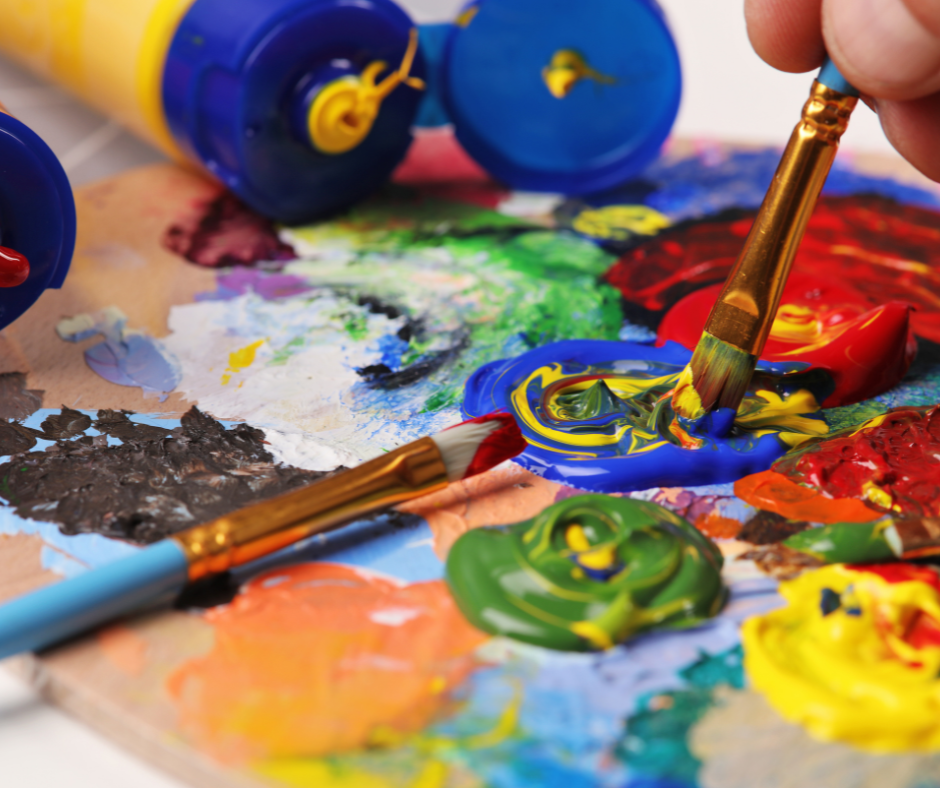
3. Emotion Collage
Cut out images, textures, or words from magazines and arrange them on paper in a way that reflects your current emotional state.
- Don’t aim for “pretty” — aim for honest.
- Afterward, write down a few words or sentences about what you see.
Sometimes your subconscious will speak more clearly through images than language.
4. Clay Squeeze
Using clay, Play-Doh, or kinetic sand, let your hands work without a goal.
- Knead, poke, flatten, roll — follow what feels satisfying.
- Notice how the pressure you use changes with your mood.
This sensory grounding can be particularly helpful when you feel scattered or agitated.

5. Daily Doodle Ritual
Spend 5 minutes a day making marks on a page with no plan or theme.
- Over time, look for patterns — do your lines change with your emotions? Do certain shapes repeat?
- Treat this as a visual diary, not an art project.
6. Self-Portrait Without Rules
Draw yourself based on how you feel inside, not how you look outside.
- Maybe your arms are huge because you’ve been overextending yourself.
- Maybe your head is tiny because you’ve been avoiding thinking.
It’s a way to see the parts of you you might not acknowledge in words.
7. Nature Texture Rubbings
Place paper over tree bark, leaves, or stones and rub with crayons or pencils.
- Notice the repetition and organic patterns.
- Arrange the textures into a collage later, adding colour or words.
This practice connects you with nature and offers grounding through touch.
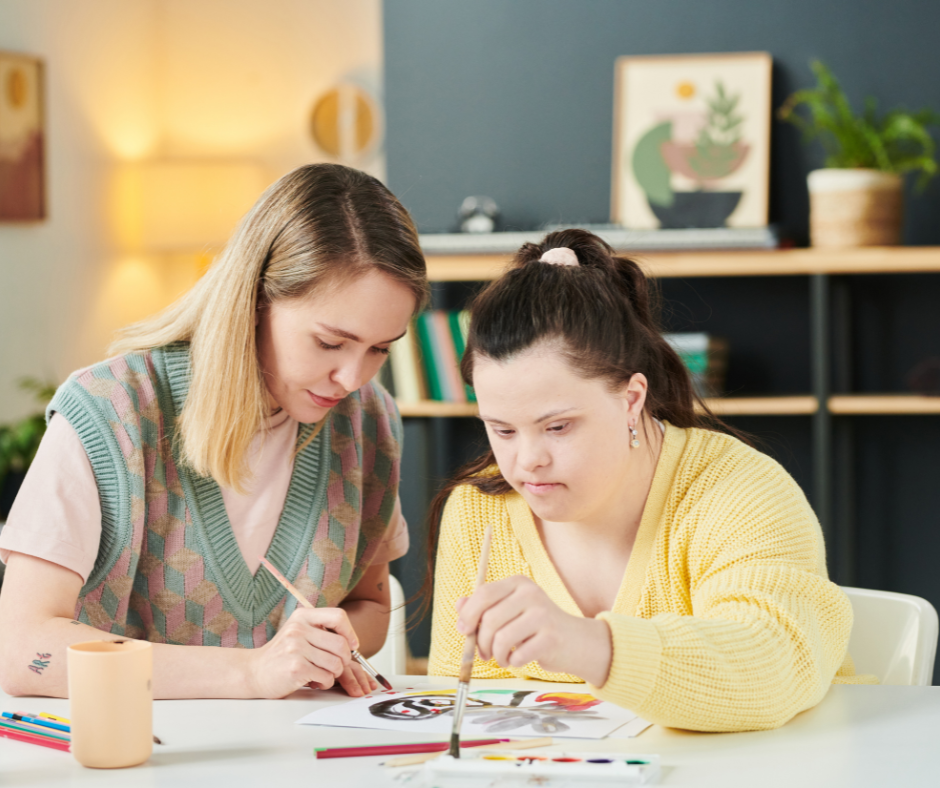
8. Paint to Music
Choose a song and let it guide your brushstrokes or pencil movements.
- Fast beats might create jagged shapes; slow melodies might invite flowing lines.
- Focus on rhythm rather than content.
Music shifts you into the present moment, allowing art to emerge intuitively.
9. Letter to Yourself in Symbols
Instead of writing in words, use colours, marks, or shapes to “send” yourself a message.
- A spiral might mean patience, a star might mean hope.
- Later, try interpreting what you’ve drawn.
This creates a form of communication that’s more primal than writing.
10. Gratitude Mandala
Draw a circle and divide it into sections, filling each one with drawings or patterns representing things you’re grateful for.
- Use repetition for a meditative effect.
- Keep it visible as a reminder of stability in your life.
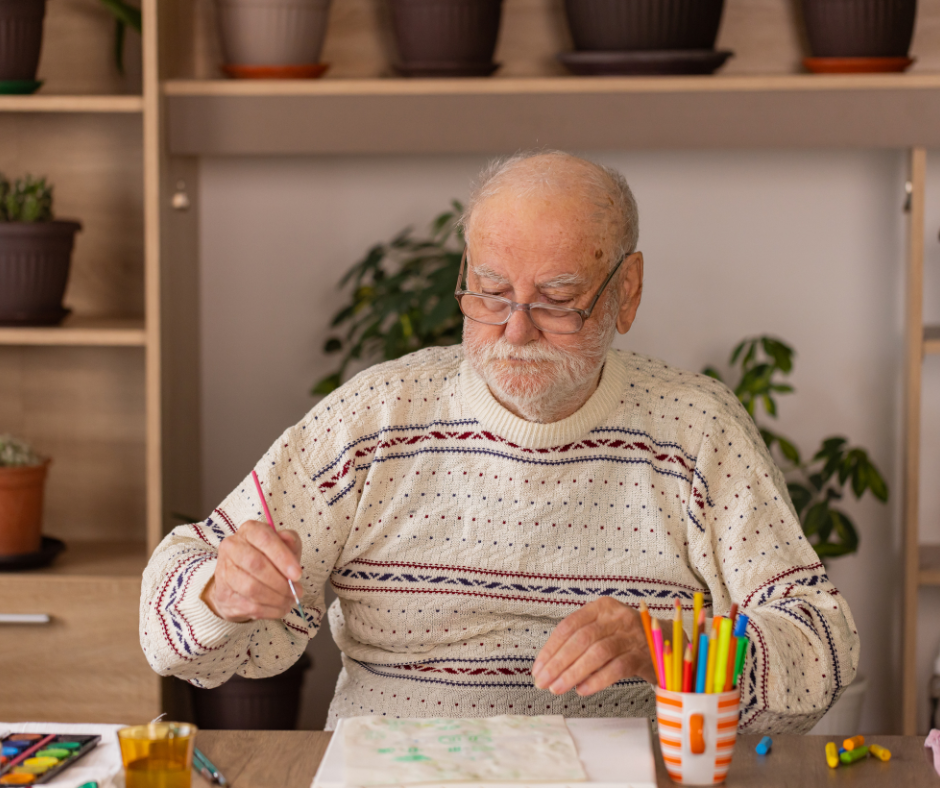
11. The “Release” Scribble
When you’re holding tension, grab a pen and scribble fiercely until your hand feels tired.
- Don’t worry about control — this is physical, emotional release.
- You can leave it as-is or transform it into an image later.
12. Timeline of Shapes
Draw a horizontal line and represent different life events as abstract shapes along it.
- Big circles for significant moments, small lines for fleeting memories.
- Colour them based on how you feel about each event.
This visual timeline can reveal patterns in your life’s emotional journey.
13. Finger Painting for Stress Release
Yes, even as an adult. The sensory experience of cool paint on your fingers can bypass mental tension.
- Let your hands roam freely over the page.
- Focus on texture, blending, and touch.

14. The “Emotion Creature”
Give your current mood a physical form — draw or sculpt it as a creature.
- Does it have soft fur or sharp spikes? Is it big or small?
- Naming it can help you externalise and relate to it with curiosity instead of judgement.
15. Collage Vision Board for Healing
Not about achieving goals — about imagining what healing feels like.
- Choose images and colours that represent safety, comfort, and peace.
- Place it somewhere you’ll see often.

Try This Art Activity: “The One-Line Story”
This activity is designed to help you loosen control, invite surprise, and uncover hidden feelings. It’s deceptively simple but can reveal a lot.
What You’ll Need:
- A blank sheet of paper (the bigger, the better)
- A pen, marker, or soft pencil
- Optional: coloured pencils or markers for after the first step
- A timer (your phone works fine)
Step 1 — Settle In:
Sit somewhere comfortable. Take a few slow breaths to centre yourself. You don’t need to have a “plan” — the goal is to let your hand move freely without your mind taking over.
Step 2 — The One-Line Drawing:
- Place your pen on the paper.
- Close your eyes.
- Draw a single, continuous line for 2–3 minutes without lifting your pen. Let it loop, zigzag, curve — whatever feels natural. Don’t try to picture what you’re making.
Step 3 — See What Appears:
Open your eyes. Look at your page without judgement. Do any shapes, patterns, or figures catch your attention? Does it feel chaotic, peaceful, heavy, or light?
Step 4 — Respond to the Drawing:
- If you’d like, add colour, shading, or small details where you feel drawn.
- You can also trace over parts that feel important or bold certain lines.
- Think of this as a dialogue — you’re responding to what the drawing is showing you.
Step 5 — Reflection Prompt:
Write down a single sentence that captures what this drawing “wants to tell you” today. It might be poetic, silly, or deeply emotional. There’s no wrong answer.
Why This Works:
By removing sight in the first step, you bypass your inner critic and perfectionism, making space for your subconscious to speak in shapes and movement. Adding colour or details afterward lets your conscious mind engage with what your body and emotions have already expressed.
You’re Not Just Making Art — You’re Meeting Yourself
Art therapy is less about creating something to hang on a wall and more about creating a moment of connection with yourself. In every brushstroke, scribble, collage, or clay press, you’re giving your feelings a safe place to live outside of your body.
When you create without judgement, you’re practising something incredibly rare in our fast-moving, performance-driven world: being with yourself without needing to fix or impress. You’re telling your nervous system, “It’s okay to slow down. It’s okay to feel. It’s okay to be.”
Think of every piece you make as a conversation between your inner self and your outer self — one that doesn’t need translation or justification. Some days, the art will feel messy and unresolved, just like your emotions. Other days, you might surprise yourself with clarity and beauty. Both are equally valid.
Over time, these creative moments become like markers on a trail — reminders of where you’ve been, how far you’ve come, and what’s still calling for your attention. Whether you keep your art, gift it, or recycle it, the act of making is the real medicine.
Most importantly, remember: your healing doesn’t have to look like anyone else’s. If picking up a pencil or brush feels comforting, follow that instinct. If tearing paper or pressing clay feels right, trust it. In art therapy, your process is the point. The product is just a byproduct of your self-discovery.
At KMA Therapy, we know that healing takes many forms — and sometimes words aren’t enough. Through creative, trauma-informed approaches, we help you find the tools, practices, and safe spaces that work for you. Art can be one of those tools — a gentle, non-verbal way to honour your emotions and reconnect with yourself.
💬 Book your free 15-minute discovery call today






